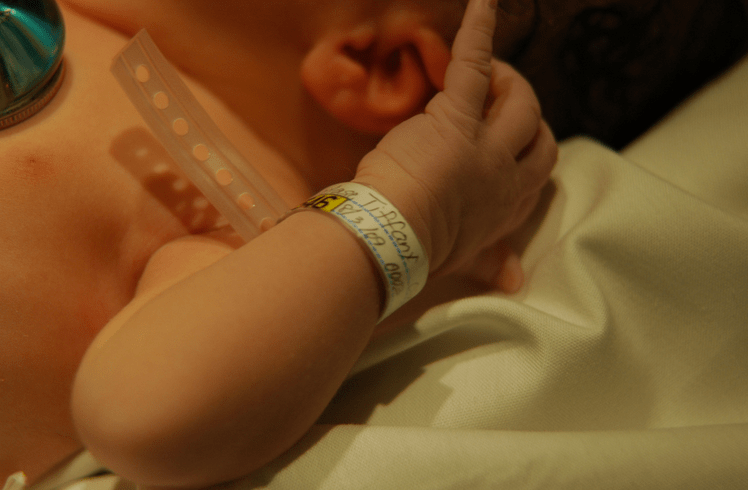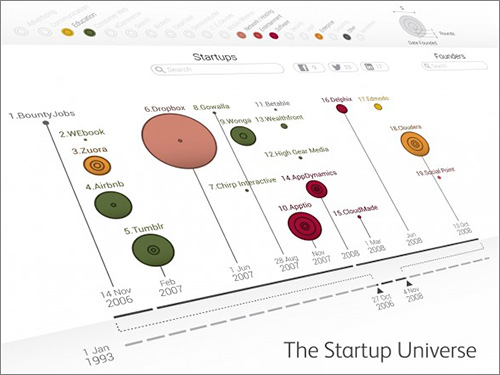
Total Pageviews
Tuesday 31 December 2013
Daily Roundup: NSA iPhone malware, Mac Pro teardown, this year in reviews and more!

Dell portrays itself as a feisty startup in its first ad after going private (video)

Want to stream ABC shows the day after they air? Better get cable

2013 para la Agencia Espacial Europea y la NASA
Sendos resúmenes del año que acaba por parte de la Agencia Espacial Europea y de la NASA:
via Microsiervos http://www.microsiervos.com/archivo/ciencia/2013-para-la-agencia-espacial-europea-y-la-nasa.html
Leak hints Google may shut down its Schemer goal sharing service

Sony's first PlayStation 4 ad for Japan teases the Japanese with everyone's joy

Google wants to make your mundane conversations into quirky online comics

Sony launches dedicated Xperia Z Ultra cases for QX lens cameras

Mac Pro Teardowns Show Off Surprisingly Repairable Powerhouse

10 tech non-profits worth donating to before 2014

El tiempo visto desde el cielo, un libro sobre aero y meteotrastorno

![]() El tiempo visto desde el cielo
El tiempo visto desde el cielo por Francesc Mauri y Jordi Martín García. Lunwerg Editores, 2013. 216 páginas a color en español.
Jordi Martín es piloto de A320, por lo que la meteorología juega un papel importantísimo en su trabajo a la hora de planificar rutas, calcular las prestaciones del avión, mantener los márgenes de seguridad necesarios en las operaciones, etc.
Además, le encanta la fotografía, con lo que a lo largo de su carrera ha ido acumulando una ingente cantidad de imágenes no sólo de aviones sino también de los fenómenos meteorológicos con los que se ha ido cruzando.

Muestras de las fotos del libro
Así que junto con Francesc Maurí, meteorólogo, ha escrito este libro en el que cuentan la relación de la meteorología y la aviación, explicando los fenómenos meteorológicos a los que ha de enfrentarse un aviador, cual es su origen, cómo afectan al vuelo, y qué se puede hacer al respecto.
Claro que esa misma meteorología es la que sufrimos los que no trabajamos tan arriba, así que el libro es igualmente interesante para los no aerotrastornados.
Todas estas explicaciones van además acompañadas de las impresionantes fotos de Jordi, que hacen al libro aún más atractivo, aunque quizás sería más justo decir que las fotos van acompañadas de las explicaciones, pues es un libro muy visual, que entra por los ojos.
Lo rematan con un capítulo dedicado al cambio climático y otro dedicado simple y llanamente a las vistas desde el cielo.
Precioso y entretenido, ¿qué más se puede pedir?
via Microsiervos http://www.microsiervos.com/archivo/libros/el-tiempo-visto-desde-el-cielo.html
Snapdragon 805's desktop-class mobile graphics chops in action (video)

Microsoft reportedly talking to Sony about Windows Phone launch in 2014

Apple claims it 'has never worked with the NSA' to create backdoors in any of its products

Insert Coin: 2013's top 10 crowdfunding projects

Archos Beats CES Rush and Unveils Step-Counting Fitness Tracker
Mac Pro teardown reveals simple repair process and upgradeable CPU

The year in reviews: 2013's best and worst gadgets scored and scrutinized

Perros encantados de socializar con robots
En un estudio sobre la sensibilidad social de los perros los investigadores utilizaron un robot de «telepresencia» para reemplazar a un ser humano y observar su comportamiento. El resultado: la relación no era ciertamente la misma, pero no había gran diferencia.
Según cuentan en Popular Science, los perros -tras siglos y siglos de mantener relaciones muy cercanas con los seres humanos- son capaces de convivir perfectamente y sin extrañarse demasiado también con un robot con cara humana y un altavoz por el que emita sonidos y palabras: aunque no les resulte familiar, si se comporta de forma similar a una persona, haciendo gestos e interactuando un poco, su reacción es bastante parecida.
Eso sí: al principio de las sesiones un humano tenía que entrar en la habitación y pasar un rato hablando e interactuando también con el robot para que al perro le diera una sensación de «ser sociable». Si los investigadores no hacían esto entonces el perro se mostraba menos afable que con el robot. Desde luego había diferencia respecto a la forma de comportarse junto a un ser humano, pero no era muy grande: al perro le encantaba que el robot le diera comida, que jugara a escondérsela y cosas así. Pero lo relevante es que antes tenía que haber «demostrado» al perro, con su comportamiento previo, que era «un robot sociable».
via Microsiervos http://www.microsiervos.com/archivo/ciencia/perros-encantados-de-socializar-con-robots.html
Perros encantados de socializar con robots
En un estudio sobre la sensibilidad social de los perros los investigadores utilizaron un robot de «telepresencia» para reemplazar a un ser humano y observar su comportamiento. El resultado: la relación no era ciertamente la misma, pero no había gran diferencia.
Según cuentan en Popular Science, los perros –tras siglos y siglos de mantener relaciones muy cercanas con los seres humanos– son capaces de convivir perfectamente y sin extrañarse demasiado también con un robot con cara humana y un altavoz por el que emita sonidos y palabras: aunque no les resulte familiar, si se comporta de forma similar a una persona, haciendo gestos e interactuando un poco, su reacción es bastante parecida.
Eso sí: al principio de las sesiones un humano tenía que entrar en la habitación y pasar un rato hablando e interactuando también con el robot para que al perro le diera una sensación de «ser sociable». Si los investigadores no hacían esto entonces el perro se mostraba menos afable que con el robot. Desde luego había diferencia respecto a la forma de comportarse junto a un ser humano, pero no era muy grande: al perro le encantaba que el robot le diera comida, que jugara a escondérsela y cosas así. Pero lo relevante es que antes tenía que haber «demostrado» al perro, con su comportamiento previo, que era «un robot sociable».
via Microsiervos http://www.microsiervos.com/archivo//perros-encantados-de-socializar-con-robots.html
Las 20 mejores visualizaciones de datos del año
En Visual.ly han preparado su clásica recopilación anual sobre visualización datos , recogiendo los mejores trabajos infográficos, de animación e interactivos que han circulado por las redes durante 2013. De algunos de ellos ya hemos hablado por aquí, y otros se refieren a datos que tampoco son de gran interés por ser demasiado locales, pero siempre es agradable echarles un vistazo.
via Microsiervos http://www.microsiervos.com/archivo/arte-y-diseno/20-mejores-visualizaciones-datos.html
Google Play Music All Access customers are next in line for Glass

TiVo co-founders joining forces for yet another set-top box

7 Huge Tech Trends to Expect in 2014

MaternityCompare Helps Expectant Parents Find Healthcare Providers

Choosing an obstetrician can be extremely stressful for expectant parents. Additive Analytics, a new startup, hopes to help patients find trustworthy providers with MaternityCompare, its first product. The site pulls data that is publicly available from the U.S. government and turns it into an easy-to-understand reference tool. MaternityCompare shows what percentage of newborns at different hospitals throughout the U.S. had deliveries that were scheduled one to three weeks early for no medical reason, which can negatively affect the baby’s health.
Founder Laura Hamilton’s goal is to help mothers-to-be become smarter health care consumers while at the same time giving hospitals an incentive to improve their care.
“Today you can go on the internet and compare restaurants or compare sports teams or compare colleges, and there are dozens of detailed tools available to tell you which one is the best,” she told me in an email. “But if you’re 38 weeks pregnant and you’re choosing a hospital for the delivery, you don’t have the same tools. To me that is a real problem.”
According to information from the Centers for Medicare and Medicaid (the same organizations Hamilton sourced MaternityCompare’s data from), elective early deliveries currently make up 10% to 15% of all births in the U.S., even though groups like the American College of Obstetricians and Gynecologists (ACOG) and the March of Dimes encourage full-term pregnancies, or those that reach 39 weeks gestation, whenever possible.
MaternityCompare’s stats count elective early births that were scheduled one to three weeks ahead of the baby’s due date (it excludes early births that were medically necessary or occurred because of natural reasons). Her site’s data comes from Medicare and currently covers 1Q 2013. For each hospital listed, the sample size ranges from 11 to 1,073 deliveries and the dataset covers 51,314 births across 1,597 hospitals in total. Hamilton did not include hospitals with fewer than 11 deliveries in that period.
“My hope is that by providing transparency into different hospitals’ early elective delivery rates, I can give expectant mothers the data they need to find the best hospital for them. In addition, I hope that drawing attention to this metric will encourage hospitals with excessive early deliveries to take steps to improve,” Hamilton explains.
There are already several sites that help patients compare the performance of doctors in their area. Hamilton says ZocDoc, which is backed by Peter Thiel, Marc Benioff, Khosla Ventures and Jeff Bezos, as a potential competitor, but notes that her startup is different because ZocDoc focuses on patient reviews and Additive Analytics uses quantitative metrics. Hamilton encourages patients to use both tools when looking for a provider. Other competitors include the Leapfrog Group, which provides hospital comparison tools based on data from the voluntary Leapfrog Hospital Survey, and Consumer Reports’ hospital ratings.
There is still a dearth of sites with metrics aimed at expectant parents, however, which is why Hamilton decided to launch MaternityCompare as Additive Analytics’ first product.
“If a hospital has a very high rate of early elective deliveries, it means they are not following guidelines set out by the American College of Obstetricians and Gynecologists,” says Hamilton. “To me that’s a bit of a red flag.”
She adds that she hopes MaternityCompare will help pregnant women become better advocates for their health.
“If her obstetrician suggests scheduling an early elective delivery, she can point to this tool (and to recommendations by the March of Dimes) and insist on a delivery date after 39 weeks,” she says. “I do want to stress, however, that if there is a medical reason for an early delivery, you should absolutely follow your doctor’s recommendations.”
Hospitals can also benefit from tools like MaternityCompare by using them to set performance benchmarks or identify areas where they need to improve policies or procedures. Doing so can help them increase their reimbursements, which are tied to quality measures under the Affordable Care Act, Hamilton points out.
Additive Analytics is currently being bootstrapped by Hamilton, who has a mathematics degree from the University of Chicago. She launched Canadian and Australian operations for Enova International while working as a product manager and was head of analytics at U.S.-Russia e-commerce company BayRu, where she developed a proprietary analytics engine to compare the performance of different benchmarks.
Eventually, Hamilton plans to add more “online hospital comparison tools to include dozens of quality metrics.” Like MaternityCompare, Hamilton hopes that patients will be able to use Additive Analytics’ products to find the best provider for their medical needs, while at the same time helping doctors and hospital administrators do a better job.
Additive Analytics’ hospital comparison tools will remain free, but it will earn revenue by offering paid custom analytics for hospitals. The startup is working on software that will take data from hospital electronic medical records (EMR) and help them identify areas where they can improve their performance.
“Today, companies spend a huge amount of time and money running advanced machine learning algorithms on their data to optimize their marketing spend, improve website conversions, and recommend similar products to their customers,” Hamilton says. “Which is fine—that’s what they should be doing. We think that the same cutting-edge machine learning, the same analytical horsepower, should be applied to the healthcare sector. Here lives are at stake. And lives are more important than dollars.”
Image by Brad Brundage on Flickr
via TechCrunch » Startups http://feedproxy.google.com/~r/techcrunch/startups/~3/R9yKmZtvu7Y/
